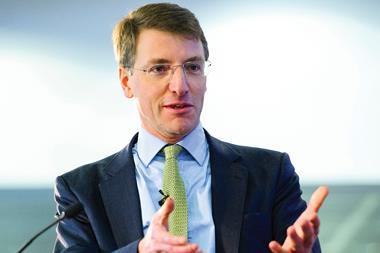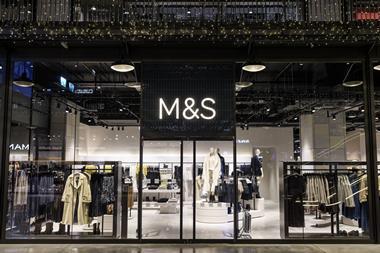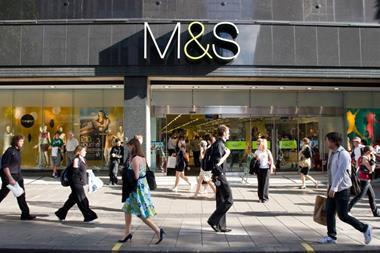Chancellor Alistair Darling’s starkly bleak comments last weekend might have struck a chord with some retailers. The economic downturn is likely to be “profound and long lasting”, he warned. According to Darling, things have not been this bad in 60 years.
But while many would dispute Darling’s verdict, few would bother arguing with the Chancellor. Whether it was worse 16, 25 or 60 years ago barely matters. The point is that few can remember high street conditions being more difficult. Darling’s downbeat analysis was just one more cloud – perhaps a bigger and greyer one – among the many that have cast their shadow over the economy for months.
A relentless flow of dismal data has drenched businesses and consumers alike in a cold downpour as depressing as the summer’s unremitting rain: record lows in consumer confidence, record falls in mortgage approvals, record price rises and record retail sales declines.
So what hope can retailers have for a return to better times and a change in trading conditions?
Many observers believe that another 18 months of downturn is in the pipeline. That is the view of Capital Economics, whose UK economist Vicky Redwood says: “It’s hard to see relief on the horizon. I think it will go on for the rest of this year and probably next.”
Citi analyst Richard Edwards fears that the outlook for household finances means retailers might be under pressure for even longer. In a note this week, he warns: “Our updated available cash analysis argues for a further 24 months of retail sales declines. Anecdotally, the consumer slowdown started in mid-May but, unlike the mid-1970s [when there was a supportive inflationary environment] and early 1990s [stimulatory fiscal policy], we believe there will be no sharp return to positive sector like-for-like trends post-2009.”
At present, the UK is not actually in recession although one is almost certain now that economic growth has ground to a halt, according to Capital Economics. But would that make high street conditions any more difficult?
A recession occurs officially when there are two consecutive quarters of contraction in the economy. However, according to Redwood, that fine distinction will make little difference to retailers. “It’s not worth getting too bogged down in the technical definition,” she says. “The point is that spending has slowed.”
The real impact of a technical recession, she argues, may be felt in shoppers’ minds. “Mention the r word and the press attention it attracts can make the gloom factor worse,” she says.
Although such headlines can probably be expected within months, the most important factors for retailers are what triggers for recovery there may be and when they are likely to be activated.
The credit crunch, which sparked the run on Northern Rock a year ago, had a psychological effect as well as a tangible impact on consumer behaviour. The reality of falling house prices, failing banks and barriers to mortgage deals was followed swiftly by a more general loss of confidence. Food and utility price rises dealt a similar double-fisted blow.
Only when consumer confidence improves – which in turn is dependent on improvements to consumers’ concrete finances – are retailers likely to benefit from freer spending.
However, at the moment there are few signs that such improvement is on the way. In July, market researcher Gfk NOP’s benchmark consumer confidence index fell to its lowest level since it began in 1974.
False hope
In August, there was a small rebound – to the second-lowest point reached to date – but the change is unlikely to be reflective of a trend yet, warns Gfk financial director Andy Thwaites. He puts August’s better figures and a slight improvement in confidence in the economy over the next 12 months down to short-term factors such as cheap petrol deals, summer holidays and even Team GB’s Olympic success.
Gfk also reported that, in August, 39 per cent of consumers said they had switched to supermarket own-brands rather than branded goods and 38 per cent had cut down on nights out to pubs and restaurants, indicating that consumers are acting decisively to save cash.
Thwaites believes the changed pattern of home ownership is one of the reasons why consumer confidence has slipped to record lows, even though the country is not in recession. In the 1970s and early 1980s there were far fewer home owners, he points out. Today’s much higher level of home ownership is therefore even more important to confidence and has underpinned retail sales growth.
He says: “We’ve had a long period of economic stability, so falling off a cliff has really affected people. The fact that it’s been so long since the last recession means it’s been a real shock.”
The economic decline of the past year has put pressure on the Government to assist retailers, businesses in general and consumers. Last week, the BRC made its pre-Budget submission to Darling. The trade body called for measures to cut household bills – such as the introduction of a zero VAT rating on energy saving products – and alleviate business costs, such as reintroducing empty property relief.
As Retail Week went to press, Prime Minister Gordon Brown was preparing to relaunch his embattled government and a raft of populist initiatives – such as stamp duty exemptions and house purchase loans – was expected.
However, some doubt that the Government can make much difference. Many of the problems of the past 12 months – such as rising oil and food prices and the credit crunch itself, which originated in the US – are beyond state control. Retail Knowledge Bank senior partner Robert Clark says: “In terms of consumer spending, there’s a limited amount they can do – all they will be doing is cosmetic stuff.
Clark, an observer of the retail industry over decades, takes a less pessimistic view of the downturn and its impact on retailers than many others.
“I’m surprised about what Alistair Darling said. It’s not the doom and gloom he appears to be making out – certainly not in terms of the retail trade. You could argue it’s irresponsible and one wonders whether there’s a hidden agenda where he and the Government hope to over-deliver.”
He is dismissive of some of the wilder claims about the severity of the downturn. “My view is that it’s no worse than the one at the beginning of the early 1990s so far and shows no sign of being worse,” he says.
Clark believes that ONS sales data, criticised by many retailers and the BRC for painting an artificially rosy picture, is not misleading. “The Government statistics cover a much bigger sample than any of the others and they do seem reasonably right – we don’t stop buying, life goes on,” he argues.
He points out that unemployment – although on the rise and an issue that is worrying consumers – is nowhere near the levels suffered in previous recessions and downturns.
Clark sees signs that food and oil price inflation are beginning to “work themselves out”. Redwood makes a similar observation, saying: “Inflation is set to fall fairly sharply next year. Partly, the oil price looks to have peaked and global demand is slowing. Food price inflation has been pushed up by temporary demand shocks.”
Redwood envisages a fall in interest rates as early as November this year and thinks they could come down to 3.5 per cent next year. Lower interest rates would potentially help consumers and retailers.
Despite such glimpses of hope on the horizon, the effects will take a long time to work their way into consumers’ mindsets and, subsequently, into their behaviour. Redwood says that the lag between a rate change and shifts in consumer behaviour, for instance, can be between nine and 15 months.
Thwaites says he would want to see at least three months of improving consumer sentiment before he would feel confident that it was definitely on the turn. “If people get a bit more money in their pocket, feel safer in their jobs and house values are going up, then there will be an improvement,” he says.
That may still be some way off and, in the meantime, store groups will continue to feel the pressure. However, Clark believes that the retail sector will emerge intact and takes a sanguine view of present conditions. He says: “Some of the weaker brethren will go, but I don’t think it will be an awful lot different. All the doom and gloom makes people nervous that the whole consumer apparatus has gone pear-shaped – not true.”
The essential retail traits to survive the downturn
Value Whether they be low-price, mid-market or upscale, stores that can demonstrate good value will survive
Scale The biggest retailers, or members of buying organisations, will be able to buy most economically
Supplier relationships Whether demanding improved terms, or working in partnership to bring costs down or improve quality, supplier ties will be key
Management Impossible to underestimate. The most experienced, charismatic leaders will motivate colleagues best
Service When shoppers pause to think before spending, service levels will make the difference between a sale or not
Multichannel strategy The ability to inform and sell to shoppers through several mediums is essential
Smart sourcing Are you buying from the best value locations?


























No comments yet